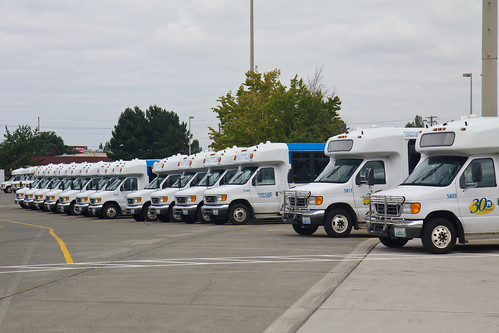by Access Exchange International
It is about addressing the need of persons with disabilities and others for paratransit service when accessible “fixed-route” bus or rail service is not available or, if available, cannot be used by persons who need more specialized transportation.
This guide is written for city officials, transit operators, entrepreneurs, non-governmental organizations (NGOs), social service agencies, and others who may wish to start up or expand door-to-door paratransit services to help mobility-impaired persons to get to where they need to go. It is not aimed at countries which already have such services and have the resources and money to support and pay for them, although many of our findings will be relevant to them. Rather, this guide provides information and guidance for cities and towns and villages in less-wealthy regions faced with many barriers to such transportation. These barriers are so great that many cities, to say nothing of the countryside beyond these cities, have not begun to address the task of providing paratransit for those who most need it.
The financial, infrastructure, and operational issues are daunting. In many rural areas, nearly everyone is mobility-impaired because there is very little public transportation. The situation can be equally bad in cities for persons with disabilities who are unable to use bus and rail lines. They remain trapped where they live, unable to get to work, to school, or to medical help and other activities due to the prohibitive cost of hiring a taxi or finding an accessible vehicle.
To provide guidance in these situations, we will be helped by the example of practitioners in cities which have begun to address some of the needs of mobility-impaired citizens. We will look at case studies of paratransit systems in São Paulo, Cape Town, Moscow, New Delhi, Istanbul, and Kuala Lumpur. We will also bring in the hard-won knowledge of paratransit systems in countries with longer histories of paratransit provision, such as the USA and France, or wealthier cities such as Hong Kong or San Francisco.
If the problems are large, so are the opportunities! This guide is about leveraging opportu- nities to overcome problems.
This guide is written for city officials, transit operators, entrepreneurs, non-governmental organizations (NGOs), social service agencies, and others who may wish to start up or expand door-to-door paratransit services to help mobility-impaired persons to get to where they need to go. It is not aimed at countries which already have such services and have the resources and money to support and pay for them, although many of our findings will be relevant to them. Rather, this guide provides information and guidance for cities and towns and villages in less-wealthy regions faced with many barriers to such transportation. These barriers are so great that many cities, to say nothing of the countryside beyond these cities, have not begun to address the task of providing paratransit for those who most need it.
The financial, infrastructure, and operational issues are daunting. In many rural areas, nearly everyone is mobility-impaired because there is very little public transportation. The situation can be equally bad in cities for persons with disabilities who are unable to use bus and rail lines. They remain trapped where they live, unable to get to work, to school, or to medical help and other activities due to the prohibitive cost of hiring a taxi or finding an accessible vehicle.
To provide guidance in these situations, we will be helped by the example of practitioners in cities which have begun to address some of the needs of mobility-impaired citizens. We will look at case studies of paratransit systems in São Paulo, Cape Town, Moscow, New Delhi, Istanbul, and Kuala Lumpur. We will also bring in the hard-won knowledge of paratransit systems in countries with longer histories of paratransit provision, such as the USA and France, or wealthier cities such as Hong Kong or San Francisco.
If the problems are large, so are the opportunities! This guide is about leveraging opportu- nities to overcome problems.

more about sustainable transportation:
No comments:
Post a Comment